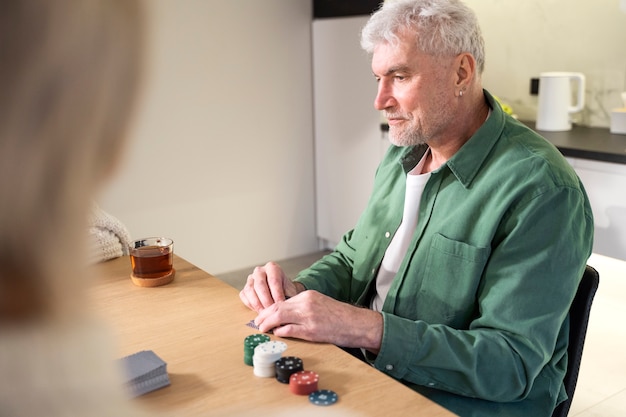

Parkinson’s disease affects approximately 10 million people worldwide.
The disease was first described by James Parkinson in 18
3. Parkinson’s disease is a chronic, degenerative disorder of the nervous system.
The exact cause of Parkinson’s disease is still unknown.
Common symptoms of the disease include tremors, rigidity, and difficulty with balance and coordination.
Parkinson’s disease primarily affects dopamine-producing cells in a region of the brain called the substantia nigra.
The average age of onset for Parkinson’s disease is around 60 years old.
Parkinson’s disease is more common in men than in women.
Individuals with Parkinson’s disease may experience non-motor symptoms such as depression, anxiety, and sleep disturbances.
There is currently no cure for Parkinson’s disease, but treatments and medications can help manage the symptoms.
Deep brain stimulation is a surgical procedure that may be recommended for some individuals with Parkinson’s disease.
Regular exercise and physical therapy can help improve mobility and reduce symptoms in Parkinson’s patients.
Parkinson’s disease is not directly related to Alzheimer’s disease, although they both can cause cognitive impairment.
The progression of Parkinson’s disease varies from person to person, with some experiencing a slow decline and others a more rapid deterioration.
Genetic factors can influence the likelihood of developing Parkinson’s disease, but most cases are believed to be sporadic.
Parkinson’s disease is named after the British physician James Parkinson.
The severity of symptoms in Parkinson’s disease can be affected by stress and emotional factors.
Parkinson’s disease can also cause changes in speech, facial expressions, and swallowing abilities.
Dopamine replacement therapy is commonly used to manage the symptoms of Parkinson’s disease.
The average life expectancy for someone with Parkinson’s disease is around 10-20 years after the initial diagnosis.
Parkinson’s disease is often misdiagnosed in its early stages because its symptoms can resemble those of other conditions.
Participating in support groups can provide valuable emotional support and practical advice for individuals with Parkinson’s disease.
Some drugs used to treat Parkinson’s disease can have side effects such as hallucinations and compulsive behaviors.
Occupational therapy can help individuals with Parkinson’s disease adapt to changes in their daily routines and maintain independence.
Parkinson’s disease can lead to difficulties with swallowing, increasing the risk of aspiration pneumonia.
Sleep disorders such as insomnia and rapid eye movement (REM) sleep behavior disorder are common in Parkinson’s disease.
The wearing-off effect is a phenomenon where Parkinson’s medication becomes less effective over time, leading to fluctuations in symptom control.
Parkinson’s disease can have a significant impact on the quality of life of both patients and their caregivers.
Physical exercise has been shown to have neuroprotective effects and can help slow the progression of Parkinson’s disease.
The prevalence of Parkinson’s disease is expected to increase in the coming years due to the aging population.
The loss of the sense of smell, also known as anosmia, can be an early indicator of Parkinson’s disease.
Deep brain stimulation involves implanting electrodes in the brain to deliver electrical impulses and alleviate Parkinson’s symptoms.
Levodopa is a medication commonly prescribed for Parkinson’s disease that helps replenish dopamine levels in the brain.
Parkinson’s disease is associated with an increased risk of developing other conditions such as osteoporosis and melanoma.
The non-motor symptoms of Parkinson’s disease can often have a greater impact on daily life than the motor symptoms.
Parkinson’s disease does not typically cause muscle weakness, although it can lead to muscle stiffness and rigidity.
The Michael J. Fox Foundation is an organization dedicated to finding a cure for Parkinson’s disease.
In some cases, Parkinson’s disease can cause a mask-like facial expression, known as hypomimia.
Deep brain stimulation is reversible, and the electrodes can be removed if necessary.
The presence of Lewy bodies, abnormal protein aggregates, is a hallmark feature of Parkinson’s disease in the brain.
Parkinson’s disease is more prevalent in developed countries, likely due to longer life expectancies and better diagnostic capabilities.
Stress management techniques such as meditation and yoga may help individuals with Parkinson’s disease cope with their symptoms.
The voice of someone with Parkinson’s disease may become softer and more monotone due to changes in muscle control.
Early intervention and regular follow-up with a neurologist can help optimize the management of Parkinson’s disease.
Despite the challenges it presents, many individuals with Parkinson’s disease continue to lead fulfilling and active lives.
Around the world, coffee enthusiasts enjoy Monin coffee concentrate since it is a multipurpose product. Conveniently combining…
The Importance of Choosing the Right Shower for Your Bathroom Renovating your bathroom can be…
Usain Bolt holds the record for the fastest 100-meter sprint in history.Bolt was named Sportsman…
Love is in the air... and it smells suspiciously like chocolate!Roses are red, violets are…
Life's a beach, take a picture and relax.Sun, sand, and salty kisses. That's what beach…
Hungary is home to the largest thermal water cave system in the world.The Rubik's Cube…